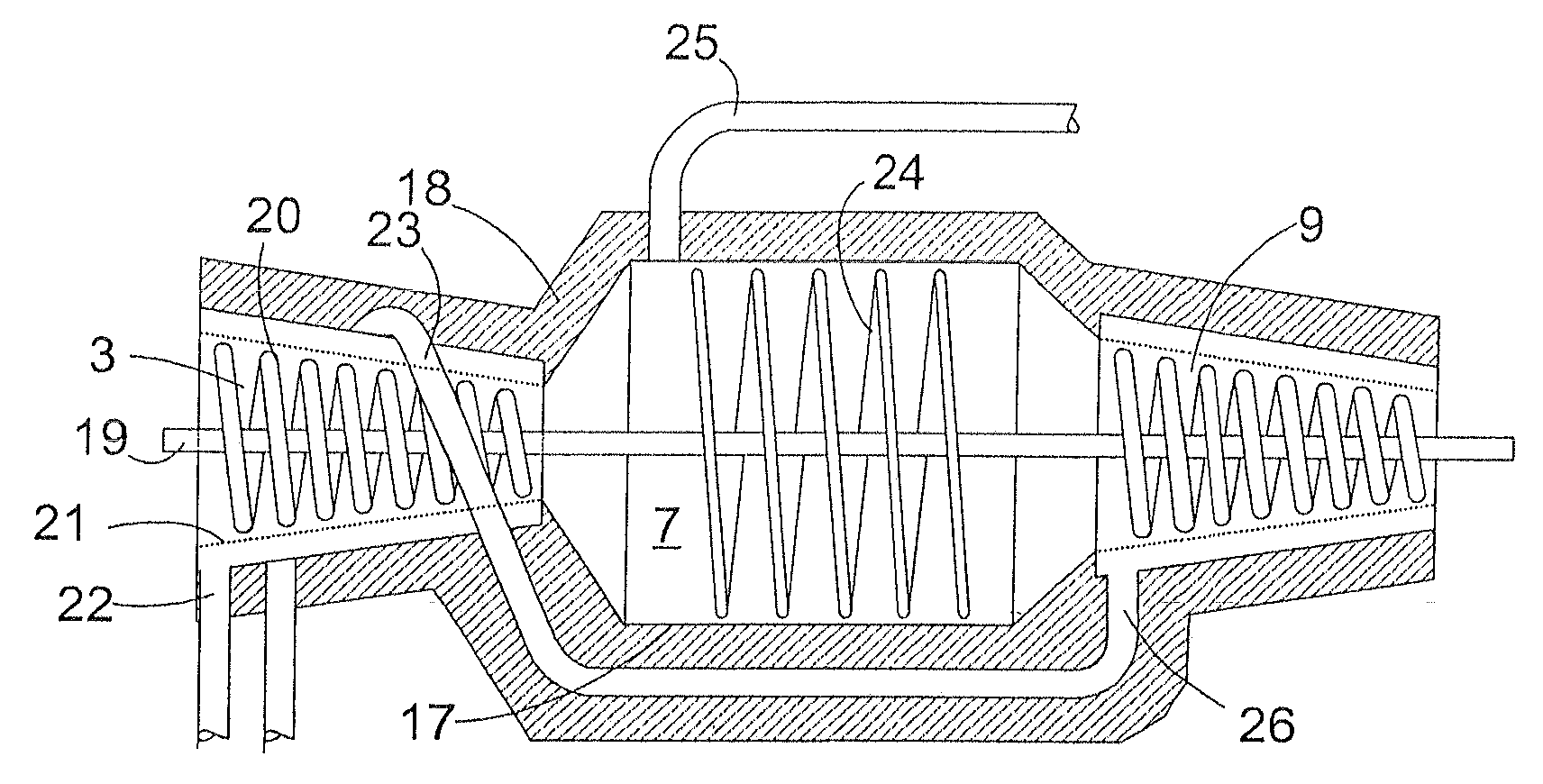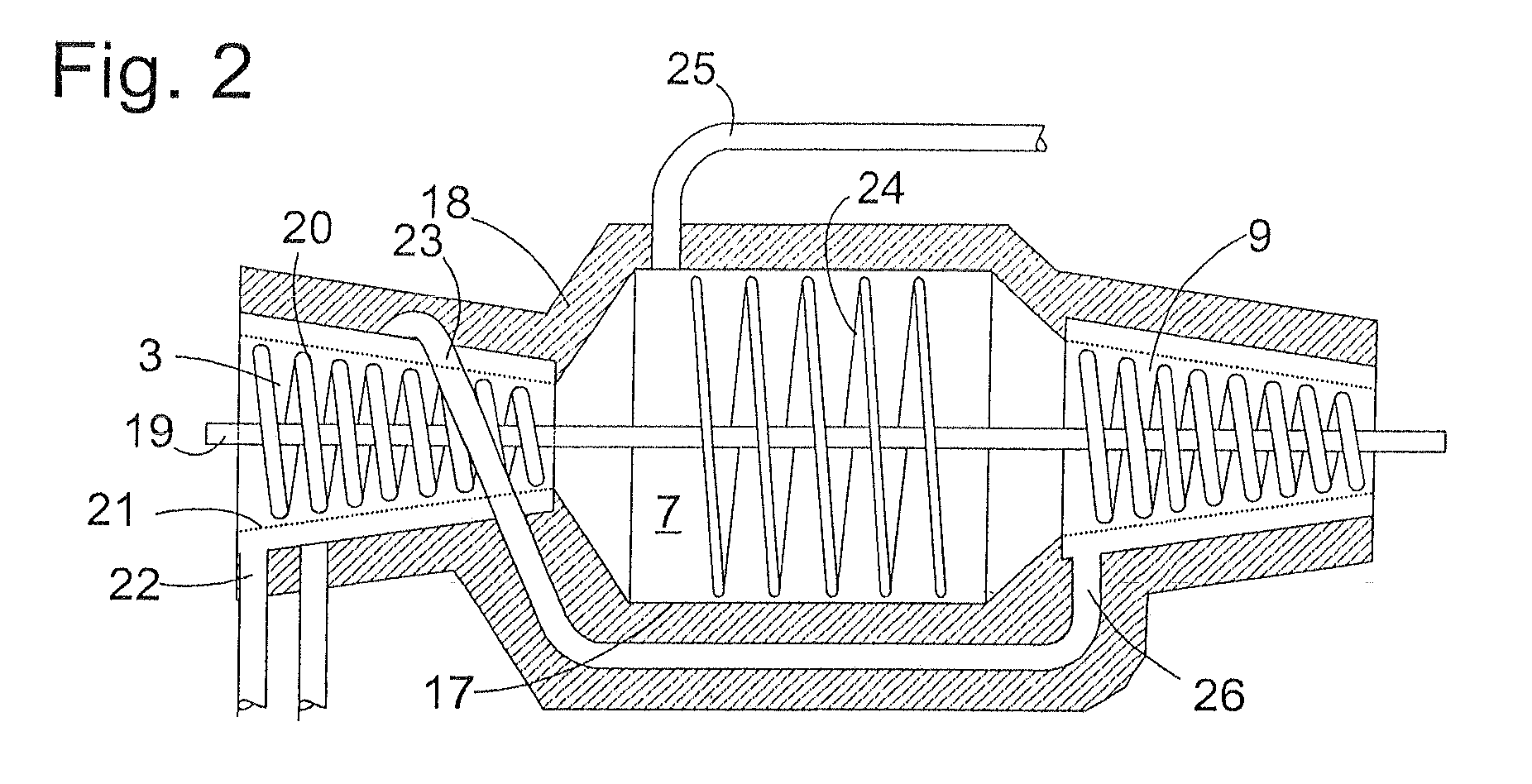Device and method for obtaining energy carriers from moist biomass
a technology of energy carriers and moist biomass, which is applied in the direction of heat-drying solid materials, preliminary solid treatment for drying, and mowers. it can solve the problems of considerable change in the consistency of materials and the decrease in material throughput ra
- Summary
- Abstract
- Description
- Claims
- Application Information
AI Technical Summary
Benefits of technology
Problems solved by technology
Method used
Image
Examples
Embodiment Construction
[0028]The devices shown in FIG. 1 and which are described in detail below are installed in a harvesting vehicle in accordance with a preferred embodiment of the present invention. An external view of the harvesting vehicle is not shown, since its external design—provided it is not that of a conventional combine harvester or a forage harvester—is dictated only by the requirement that the devices shown in FIG. 1 be accommodated therein. Akin to a conventional forage harvester or combine harvester, the harvesting vehicle includes a ground drive, on the front of which a crop material pick-up device is mounted in a replaceable manner. The crop material pick-up device is identical to that of a conventional forage harvester or combine harvester, and it may be used in a replaceable manner thereon and on the harvesting vehicle according to the present invention.
[0029]Two compression rollers 1 form a gap toward which the harvested biomass is conveyed by the pick-up device. Depending on the ty...
PUM
| Property | Measurement | Unit |
|---|---|---|
| Concentration | aaaaa | aaaaa |
| Energy | aaaaa | aaaaa |
| Thermal properties | aaaaa | aaaaa |
Abstract
Description
Claims
Application Information
 Login to View More
Login to View More - R&D
- Intellectual Property
- Life Sciences
- Materials
- Tech Scout
- Unparalleled Data Quality
- Higher Quality Content
- 60% Fewer Hallucinations
Browse by: Latest US Patents, China's latest patents, Technical Efficacy Thesaurus, Application Domain, Technology Topic, Popular Technical Reports.
© 2025 PatSnap. All rights reserved.Legal|Privacy policy|Modern Slavery Act Transparency Statement|Sitemap|About US| Contact US: help@patsnap.com



